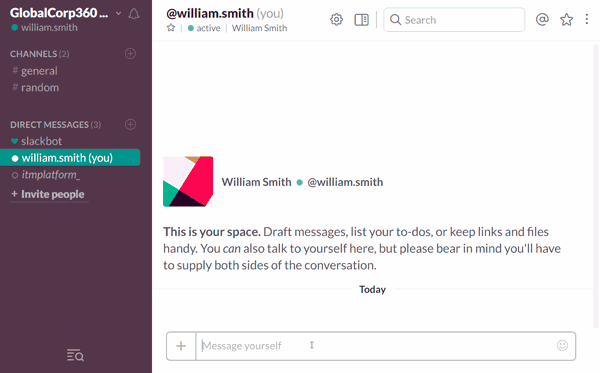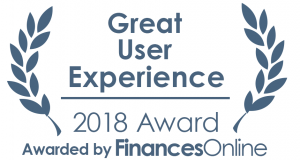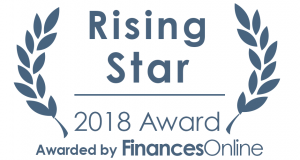
NASA's Mars Climate Orbiter got lost in space because of a classic "whoops" moment in communication. One group of engineers was all about metric units, while the other partied with the imperial system. The result? A spaceship taking an unintended spacewalk.
In the world of project management, we might not be launching rockets, but our success hinges on the same principle: clear communication. It's not just about firing off emails or scribbling notes; it’s about creating a lingua franca everyone gets.
Picture this: You're leading a software project that's so sleek even the code seems to wear sunglasses 😎. However, stakeholders express concerns about end-user adoption and market fit. Rather than assuming the project's direction, you introduce feedback-driven development sessions, where stakeholders can voice their insights and foresee potential risks. This proactive approach not only ensures the software aligns with market needs but also keeps stakeholders actively engaged and invested in the project's success.
Dive into this guide, and we'll unpack the art (and science) of project communication.
From Paper to Pixels: The Story of Project Communication
Project communication, much like the broader landscape of human connection, has undergone a transformative journey over the years.
Analog Beginnings
In earlier office scenes, typewriters echoed, hand-delivered memos were the norm, and Gantt charts proudly occupied wall spaces. Updates weren't a click away; they were presented in scheduled briefings. Patience played a critical role as stakeholders awaited these intervals of information.
The Digital Shift
As we ushered in the digital era, immediacy became the new standard. Emails began to bridge communication gaps swiftly. Digital Gantt charts emerged not just as quicker alternatives to their analog counterparts but as tools that encouraged interaction and dynamic adjustment.
Collaboration Takes Center Stage
With tools like Slack, Teams, and Trello coming into play, the concept of a traditional 'office' began to expand beyond physical walls. Geographical boundaries became less of a barrier as these platforms promoted real-time collaboration, ushering in a new age where teamwork could thrive, irrespective of location.
The Modern Landscape and Beyond
Today, the essence of project communication revolves around clarity and inclusivity. It's about ensuring every stakeholder is informed, engaged, and aligned with the project's objectives. As we cast our gaze forward, emerging technologies like AI and VR hint at even more immersive communication experiences tailored to individual needs.
Transparency in Project Management
At the heart of successful project management lies transparency. It's more than just sharing information; it's about creating an open environment where all stakeholders feel valued, informed, and involved.
- Trust is the Cornerstone: Look at how Tesla operates. They openly share ambitious goals and visions with their teams and the public alike. Employees trust that they're working towards groundbreaking objectives, while investors and the public trust in the potential of the company's direction.
- Clarity Brings Focus: Ambiguity can lead a project astray. Just as Netflix's transparent and direct internal memos ensure everyone understands the company's direction, clear project communication is critical to keep all stakeholders aligned.
- A Shared Vision: Transparency ensures everyone is aligned towards a singular vision. This doesn't mean there won't be disagreements, but with an open flow of information, it's easier to ensure everyone is on the same page.
The Positive Ripple Effects of Transparency
Transparent communication doesn't just benefit the immediate project—it has broader implications:
- Team Moral: When teams see the real-world impact of their work, much like the real-time user feedback in platforms like Airbnb, morale soars and productivity follows suit.
- Stakeholder Satisfaction: Informed stakeholders are generally happier stakeholders. When they can see the progress of a project—be it through a Gantt chart, a Kanban board, or any other visual tool—they're less likely to feel anxious or uncertain about the project's trajectory.
- Project Success and Adaptability: A transparent project management approach allows for quicker identification of issues, more agile decision-making, and a higher likelihood of project success. For example, if a sprint isn't going as planned, a visual tool can help stakeholders quickly grasp the situation, facilitating swift corrective actions.

Information is abundant yet attention is scarce. Transparency is about bridging the gap between intricate project details and stakeholder understanding.
Adaptability in Strategy and Execution
Remember the fall of Blockbuster? Their failure to adapt to the digital streaming revolution, despite an early lead in the rental market, led to their downfall. And while they faltered in adapting to the digital age, their downfall was exacerbated by a failure to communicate and rally around new market dynamics.
Fluid Strategies Through Clear Messaging
As Netflix pivoted from DVDs to streaming, their communication—both internal and external—was clear, ensuring all stakeholders understood and bought into the new direction. This wasn’t merely a strategic shift; it was a masterclass in communicating change.
Learning, Iteration, and Feedback Loops
True adaptability thrives on feedback. Spotify’s team structures, like squads and tribes, are built not just for agile operations but for agile communication. These feedback-rich environments ensure lessons are shared, learned, and acted upon.
Scenario Planning and Communication
Consider the aerospace industry. Given its complexity, companies often deploy scenario planning to anticipate potential shifts in policies, market demands, or technological advancements. But the key lies not just in creating these scenarios but in communicating them effectively. Ensuring that teams are not only aware of potential changes but also understand their implications can drastically reduce the response time when adaptations are necessary. It’s a top-down approach to ensure that both leadership and frontline workers are prepared for the twists and turns of the project landscape.
Feedback-Driven Development and the Art of Acknowledgment:
In the world of software development, adaptability can often mean the difference between a product's success or obsolescence. Platforms like GitHub or GitLab encourage developers to continually iterate based on user feedback. But here's where effective communication shines: it's not enough to adjust based on feedback. Companies that communicate back to their user base about the changes implemented (or reasons for not implementing certain suggestions) build a loop of trust and validation. This bottom-up feedback ensures that products or projects remain relevant and users feel heard.

Adaptability isn't just about adjusting to new challenges—it's about ensuring everyone is informed, aligned, and on board with those changes. As seen with companies like Netflix and platforms like GitHub, success is often determined by how well change is communicated
Engaging Stakeholders and Clients: Strategies for Effective Communication
Project management is an intricate dance of aligning various parties—internal stakeholders, external partners, and clients. One of the most significant aspects of this alignment is effective communication. Whether you're dealing with a stakeholder from a different department or a client from a different continent, crafting clarity and fostering engagement is paramount.
Understanding the Communication Landscape
The vast majority of projects, regardless of their nature, ripple through various segments of a business and its external environment. Ensuring all relevant parties are informed is not just courteous—it's fundamental to a project's success.
Stakeholder Engagement:
The Value of an Informed Stakeholder: A stakeholder, when kept up-to-date, can make insightful decisions, give timely feedback, and contribute more substantially. Conversely, those left uninformed might become hindrances or sources of resistance.
Digital Tools for Stakeholder Engagement:
- Collaboration Platforms: like Slack, Microsoft Teams, or Trello allow stakeholders to be part of the dialogue, irrespective of their location. PPM tools such as ITM Platform also include collaboration features linked to the different project items.
- Visual Aids: Tools like Kanban boards, flow diagrams, or infographics help stakeholders grasp complex information swiftly.
- Feedback Mechanisms: Digital platforms now offer intuitive ways to gather stakeholders' thoughts, ensuring their voice isn't lost in the project's noise.
Sign up for a 14-day IMT Platform free trial
Client Communication:
The Essence of Client Dialogue: When it comes to the success or failure of a project, the client's perception is the ultimate determinant. Take Domino’s Pizza. Facing declining sales and criticism about their pizza's taste in the late 2000s, Domino's didn't deflect— they leaned in. In a bold campaign, they openly acknowledged the feedback and showcased their commitment to change. More crucially, after unveiling improved recipes, they actively sought customer opinions to further refine their offerings.
This iterative approach—acknowledging issues, taking action, then looping back for feedback—wasn't just damage control; it drove a major upswing in sales and bolstered their brand image by proving that client voices mattered.
Mastering Digital Client Interactions: With a significant shift to digital touchpoints, it's essential to
- Actively Listen: With limited non-verbal cues in digital communication, it's vital to concentrate and engage with what the client communicates.
- Adapt to Communication Modes: Different clients have varied preferences—be it video calls, emails, or instant messaging. Being flexible in communication mode can foster better understanding and rapport.
Strategies for Clear and Effective Communication
To create deeper connections with stakeholders and clients alike, consider:
- Setting Clear Expectations: Before immersing into any project phase, be clear about its scope, outcomes, timelines, and challenges that might arise.
- Frequent Updates: Both stakeholders and clients appreciate regular project updates. This keeps them engaged and reduces feelings of exclusion.
- Feedback Loops: Establish a routine of checking in, gathering thoughts, and addressing concerns. This not only keeps everyone on the same page but also identifies potential pitfalls early.
- Education: Occasionally, you might come across stakeholders or clients unfamiliar with specific nuances of the project or the field. Taking time to explain these aspects not only informs them but also instills confidence in your expertise.
- Exceed Expectations: Going that extra step, be it a prompt response, delivering before a deadline, or providing additional post-project support, can set you apart in the eyes of your stakeholders and clients.
Meaningful dialogue is rooted in mutual respect, understanding, and a shared vision for project success.
Remote Project Management: Challenges, Solutions, and Best Practices
The marriage of remote work with traditional practices is here to stay. This integration provides flexibility and broader reach but also introduces unique challenges to remote project management.
- Building Trust Remotely: Without the advantage of face-to-face interactions, cultivating trust becomes a nuanced challenge. In a remote setting, fostering a culture where team members rely on each other's expertise is imperative, even if they've never shared physical space.
- Communication Over Distances: Digital tools have revolutionized communication, but they also come with their pitfalls. The absence of in-person nuances means there's a higher risk of misinterpretation or missing critical details amid digital interactions.
- Maintaining Team Cohesion: Geographical dispersion can occasionally lead to feelings of isolation or detachment from the central project goals. Ensuring that every team member feels integrated and driven by the project's mission is paramount.
Best Practices for Remote Project Management
- Establish Clear Communication Norms: It's essential to outline the mediums, frequency, and type of team interactions. Having set structures, such as daily updates or monthly stakeholder briefings, reduces confusion and aids in creating a structured communication framework.
- Encourage Work-Life Boundaries: Remote work can sometimes blur the lines between personal and professional lives. Promote a culture where work hours are respected, and personal time remains undisturbed.
- Invest in Team Building: Foster team cohesion through virtual activities or challenges tailored for remote teams. Shared experiences can solidify team bonds, even from a distance.
- Harness Digital Tools for Structured Focus: Remote work presents an array of potential distractions, ranging from household chores to the irresistible appeal of digital media. Introducing multiple tools can add to this cacophony rather than streamline work. The key is not just to adopt but to adapt tools in a manner that channels 'deep work'. Consider strategies such as Structured Digital Silence and Asynchronous Communication Prioritization.
The challenges posed by remote project management also pave the way for innovative solutions.
Final Thoughts
As we draw this exploration to a close, it's evident that the myriad threads of project management — be it strategy, adaptability, stakeholder engagement, or client communication — all converge at one point: effective communication. The success of any project doesn't merely hinge on resource allocation or meticulous planning but on how efficiently and transparently information flows among all involved parties.
Reflecting on the Pivotal Role of Communication in Driving Project Success
Over the course of this guide, we've underscored the importance of fostering an environment where clarity, trust, and adaptability reign supreme. Projects, by their very nature, are dynamic. They ebb and flow, sometimes predictably and at times unexpectedly. In such a landscape, the capacity to communicate effectively acts as an anchor, grounding the team and stakeholders alike, and steering the project through tumultuous waters towards its objectives.
"The single biggest problem in communication is the illusion that it has taken place."
George Bernard Shaw
Avoiding assumptions, regularly checking in, ensuring alignment, and seeking feedback are the bedrock of keeping happy stakeholders and clients.
Peering into the Future
As we look to the horizon, the landscape of project management is poised for further evolution. With the integration of AI-driven tools, we can anticipate even more streamlined communication processes, predictive analytics guiding decision-making, and virtual reality enabling immersive stakeholder experiences.
Furthermore, as teams become more globally dispersed, the need for tools and strategies that bridge time zones, cultural divides, and language barriers will only intensify. The aspiration for the future is not just about more advanced tools, but about cultivating a deeper sense of empathy, understanding, and collaboration, irrespective of geographical or digital divides.
Sign up for a 14-day IMT Platform free trial






 In every career, there’s a range of qualities and personality traits that can make or break your success. Project management is no different—and there are certain characteristics that project managers need to have in order to meet proficiencies in various industries. With the help of a useful software that
In every career, there’s a range of qualities and personality traits that can make or break your success. Project management is no different—and there are certain characteristics that project managers need to have in order to meet proficiencies in various industries. With the help of a useful software that  As a warm-up to our upcoming webinar, we discuss with Mats Malmström the importance of project value and project culture, and how they sometimes get thrown in as an afterthought. Mats is owner of LYM Consulting and a multi-talented management consultant with more than 25 years of experience as executive sponsor, program and project manager.
As a warm-up to our upcoming webinar, we discuss with Mats Malmström the importance of project value and project culture, and how they sometimes get thrown in as an afterthought. Mats is owner of LYM Consulting and a multi-talented management consultant with more than 25 years of experience as executive sponsor, program and project manager.
 Why make status reports?
Why make status reports?